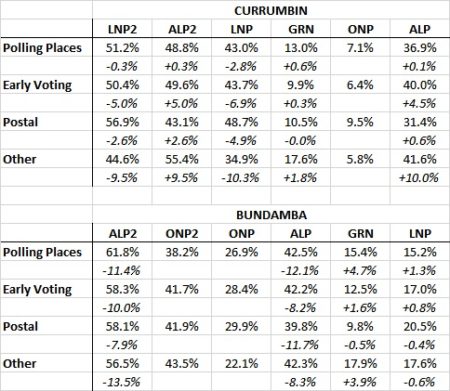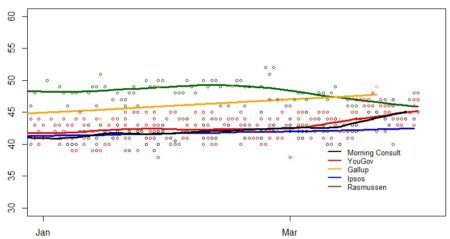There has been an outbreak of preselection challenges against federal Liberal incumbents in New South Wales, which would appear to be the fruit of new preselection rules that put more power in the hands of the party rank-and-file. However, the branch has not been so democratised as to deny the possibility of federal intervention, which Sarah Martin of The Guardian reports is likely to be invoked by the Prime Minister to protect the incumbents.
• Environment Minister Sussan Ley faces a challenge in her rural seat of Farrer from Christian Ellis, whose conservative credentials extend to an effort to expel Malcolm Turnbull from the Liberal Party after he published his autobiography last year. The Sydney Morning Herald reports that Ley has complained of “outsiders” descending upon her electorate with “city-based factional branch stacking” and “a toxic culture which isn’t about the policies or the candidate”.
• Further challenges are brewing against two leading factional powerbrokers: Alex Hawke of the centre right, from conservative-aligned army colonel Michael Abrahams; and Trent Zimmerman of the moderate faction, from both Hamish Stitt, a conservative barrister, and Jess Collins, a member of the centre right.
• In the marginal Sydney seat of Reid, moderate-aligned Fiona Martin faces a challenge from sports administrator Natalie Baini. Apparently at an earlier stage of gestation are potential challenges to Bennelong MP John Alexander from Gisele Kapterian, former chief-of-staff to Michaelia Cash; and Concetta Fierravanti-Wells, whose Senate seat is reportedly being eyed by conservative colleague Dallas McInerney, chief executive of Catholic Schools NSW.
• One challenge that will not proceed is the one said to have been of “most concern” to senior Liberals in a report by Sarah Martin of The Guardian. Melissa McIntosh, a member of the centre right faction who won the key seat of Lindsay from Labor in 2019, was said to have been under serious pressure from Mark Davies, Penrith councillor and husband of state Mulgoa MP Tanya Davies, having “lost control of her branches to the conservative faction”. However, Clare Armstrong of News.com.au reports the conservatives have “done a deal to drop the challenge”, the terms of which are unclear.
Preselections elsewhere:
• Tom Richardson of InDaily reports that candidates for Labor’s preselection in the Adelaide seat of Spence include Matt Burnell, an official with the Right-aligned Transport Workers Union, and Alice Dawkins, who works with “a consulting firm specialising in Asian strategic engagement” and is the daughter of Keating government Treasurer John Dawkins. The safe Labor seat in northern Adelaide will be vacated at the election by Nick Champion’s move to state politics.
• A Liberal preselection last weekend for the Adelaide seat of Boothby was won by Rachel Swift, moderate-aligned management consultant and medical researcher. Swift was chosen ahead of conservative rival Leah Blythe, who had the backing of outgoing member Nicolle Flint.
• The Tasmanian seat of Lyons will be contested for the Liberals by Susie Bower, Meander Valley councillor and chief executive of the Bell Bay Advanced Manufacturing Zone. Bower was a candidate for Lyons at the recent state election, but polled last out of the six Liberal candidates with 3.5% of the vote. Lyons could potentially have joined Bass and Braddon as a Liberal gain at the 2019 election if not for the mid-campaign disendorsement of the party’s candidate, Jessica Whelan.
Other news:
• Jodi McKay’s resignation as New South Wales Labor leader on Friday potentially sets up a second membership ballot for the party to go with the one that will choose Rebecca White’s successor in Tasmania. This depends on whether former leader Michael Daley puts his name forward in opposition to Chris Minns, who would appear to be the clear favourite. Today’s Sun-Herald reports that head office would prefer that Minns take the position unopposed so as to avoid “an expensive ballot of rank-and-file members, which would take weeks”. However, a tweet by Daley yesterday suggested he was not of a mind to oblige them.
• Labor MP Duncan Pegg announced his resignation from the Queensland parliament early this week after a terminal cancer diagnosis. This will lead at some point to a by-election for his southern Brisbane seat of Stretton, which Pegg retained by a margin of 14.8% at the state election last October. Such has been the electoral record of opposition parties recently that one might have thought the Liberal National Party would sit this one out, but they have in fact jumped into the fray with the endorsement of Jim Bellos, a police officer and former Queenslander of the Year. The Courier-Mail reports the front-runner for Labor preselection is James Martin, an electorate officer to Pegg.
• Occasional Poll Bludger contributor Adrian Beaumont has a piece in The Conversation on the apparent trend of non-university educated whites abandoning parties of the centre left in the United States, United Kingdom and Australia.
• Sarah Martin of The Guardian reports the Liberal party room was told this week that the election would be held next year.




